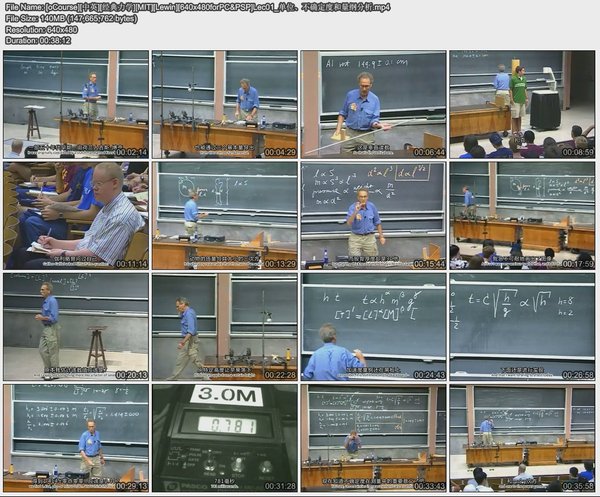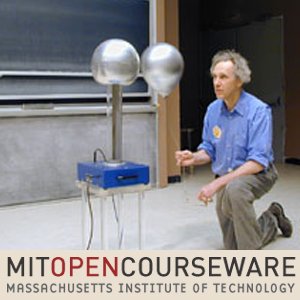MIT开放课程: 固态化学导论 (MIT OpenCourse:Introduction to Solid State Chemistry)MP4 更新完毕
文章类别:
- 11 11 月, 2022
- 0 条评论

 (0 次顶, 0 人已投票)
(0 次顶, 0 人已投票)你必须注册后才能投票!
快捷索引
会员福利
英文名: MIT OpenCourse:Introduction to Solid State Chemistry
版本: MP4 更新完毕
发行时间: 2010年
地区: 美国对白语言: 英语文字语言: 英文
简介:

Introduction to Solid State Chemistry
As taught in: Fall 2004
Level:
Undergraduate
Instructors:
Prof. Donald Sadoway
级别:
本科
导师:
教授 唐纳德Sadoway

1950年3月7日生于多伦多,安大略省,他在多伦多大学完成了本科和研究生学业,1977年获得博士学位,期间他重点研究对他的化学冶金。1977年,他获得了由国家研究理事会给予的加拿大博士后奖学金,之后来到麻省理工学院,在Julian Szekely的指导下进行博士后研究。 1978年,Sadoway成为麻省理工学院的教授。
详细资料 http://en.wikipedia.org/wiki/Donald_Sadoway
课程简介
本课程探讨了化学的基本原理及其应用工程系统。它涉及电子结构之间的关系,化学键,原子秩序。它也探讨了在结晶和非晶固体原子安排特性:金属,陶瓷,半导体和聚合物(包括蛋白质)。内容包括有机化学,溶液化学,酸碱平衡,电化学,生物化学,化学动力学,扩散和相图。例子有来自工业实践(包括化学过程对环境的影响,从发电和储存),例如,电池和燃料电池,以及新兴技术,例如,光子和生物医学设备。
Course Description
This course explores the basic principles of chemistry and their application to engineering systems. It deals with the relationship between electronic structure, chemical bonding, and atomic order. It also investigates the characterization of atomic arrangements in crystalline and amorphous solids: metals, ceramics, semiconductors, and polymers (including proteins). Topics covered include organic chemistry, solution chemistry, acid-base equilibria, electrochemistry, biochemistry, chemical kinetics, diffusion, and phase diagrams. Examples are drawn from industrial practice (including the environmental impact of chemical processes), from energy generation and storage, e.g., batteries and fuel cells, and from emerging technologies, e.g., photonic and biomedical devices.
Course introduction
1 Vision Statement, Administrative Details – Introduction – Taxonomy of Chemical Species – Origins of Modern Chemistry
2 Classification Schemes for the Elements – Mendeleyev and the Periodic Table – Atomic Structure
3 Rutherford Model of the Atom, Bohr Model of Hydrogen
4 Atomic Spectra of Hydrogen, Matter/Energy Interactions Involving Atomic Hydrogen
5 The Shell Model (Bohr-Sommerfeld Model) and Multi-electron Atoms – Quantum Numbers: n, l, m, s
6 De Broglie, Heisenberg, and Schr?dinger – The Aufbau Principle, Pauli Exclusion Principle, and Hund’s Rules – Photoelectron Spectroscopy – Average Valence Electron Energy
7 Octet Stability by Electron Transfer: Ionic Bonding – Properties of Ionic Compounds: Crystal Lattice Energy
8 Born-Haber Cycle – Octet Stability by Electron Sharing: Covalent Bonding – Lewis Structures – Hybridization
9 Electronegativity, Partial Charge, Polar Bonds and Polar Molecules – Ionic Character of Covalent Bonds, Pauling’s Calculation of Heteronuclear Bond Energies
10 LCAO MO, Energy Level Diagrams for H2, He2, Li2 – Hybridization, Double Bonds and Triple Bonds, Paramagnetism and Diamagetism
11 The Shapes of Molecules, Electron Domain Theory, Secondary Bonding
12 Metallic Bonding, Band Theory of Solids (Heitler and London), Band Gaps in Metals, Semiconductors, and Insulators, Absorption Edge of a Semiconductor
13 Intrinsic and Extrinsic Semiconductors, Doping, Compound Semiconductors, Molten Semiconductors
14 Introduction to the Solid State, the 7 Crystal Systems, the 14 Bravais Lattices
15 Properties of Cubic Crystals: Simple Cubic, Face-centered Cubic, Body-centered Cubic, Diamond Cubic – Crystal Coordinate Systems, Miller Indices
16 Characterization of Atomic Structure: The Generation of X-rays and Moseley’s Law
17 X-ray Spectra, Bragg’s Law
18 X-ray Diffraction of Crystals: Diffractometry, Debye-Scherrer, Laue – Crystal Symmetry
19 Defects in Crystals: Point Defects, Line Defects, Interfacial Defects, Voids
20 Amorphous Solids, Glass Formation, Inorganic Glasses: Silicates
21 Engineered Glasses: Network Formers, Network Modifiers, Intermediates -Properties of Silicate Glasses – Metallic Glass
22 Chemical Kinetics: The Rate Equation, Order of Reaction, Rate Laws for Zeroth, First, and Second Order Reactions – Temperature Dependence of Rate of Reaction
23 Diffusion: Fick’s First Law and Steady-state Diffusion, Dependence of the Diffusion Coefficient on Temperature and on Atomic Arrangement
24 Fick’s Second Law (FSL) and Transient-state Diffusion; Error Function Solutions to FSL
25 Solutions: Solute, Solvent, Solution, Solubility Rules, Solubility Product
26 Acids and Bases: Arrhenius, Br?nsted-Lowry, and Lewis Definitions, Acid Strength and pH
27 Organic Chemistry: Basic Concepts, Alkanes, Alkenes, Alkynes, Aromatics, Functional Groups, Alcohols and Ethers, Aldehydes and Ketones, Esters, Amines
28 Organic Glasses – Polymers: Synthesis by Addition Polymerization and by Condensation Polymerization
29 Structure-property Relationships in Polymers, Crystalline Polymers
30 Biochemistry: The Amino Acids, Peptides, and Proteins
31 Protein Structure: Primary, Secondary, Tertiary; Denaturing of Proteins
32 Ipids: Self Assembly into Bilayers – Nucleic Acids, DNA, Encoding Information for Protein Synthesis – Electrochemistry of Batteries and Fuel Cells
33 Phase Diagrams – Basic Definitions: Phase, Component, Equilibrium; One-component Phase Diagrams – Two-component Phase Diagrams: Complete Solid Solubility
34 Two-component Phase Diagrams: Limited Solid Solubility – Lever Rule
35 Wrap-up: Closing Remarks about the Course – Student Course Evaluation
视频截图



学校介绍

麻省理工学院(Massachusetts Institute of Technology,缩写:MIT)是美国一所综合性私立大学,有“世界理工大学之最”的美名。位于麻萨诸塞州的波士顿,查尔斯河(Charles River)将其与波士顿的后湾区(Back Bay)隔开。今天MIT无论是在美国还是全世界都有非常重要的影响力,培养了众多对世界产生重大影响的人士,是全球高科技和高等研究的先驱领导大学,也是世界理工科菁英的所在地。麻省理工是当今世界上最富盛名的理工科大学,《纽约时报》笔下“全美最有声望的学校”。入选中国世界纪录协会世界综合实力最强的大学候选世界纪录。
书我要,下载先! http://www.books51.com/ 祝您开卷有益!
同类文章
文章类别:
本文链接: http://www.books51.com/232928.html
【点击下方链接,复制 & 分享文章网址】
MIT开放课程: 固态化学导论 (MIT OpenCourse:Introduction to Solid State Chemistry)MP4 更新完毕 → http://www.books51.com/232928.html |
上一篇: TED演讲集:Pattie Maes 及 Pranav Mistry 示范“第六感官”装置 (Pattie Maes and Pranav Mistry de
下一篇: 国立交通大学 偏微分方程(一) (Partial Differential Equations)97学年度 应用数学系 林琦焜老师

 (0 次顶, 0 人已投票)
(0 次顶, 0 人已投票)你必须注册后才能投票!





最新评论